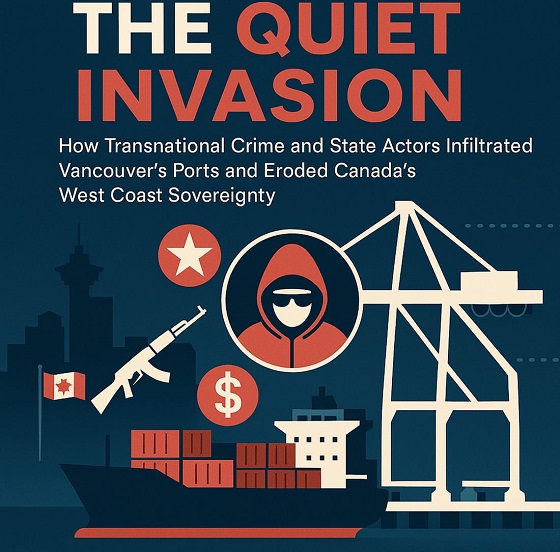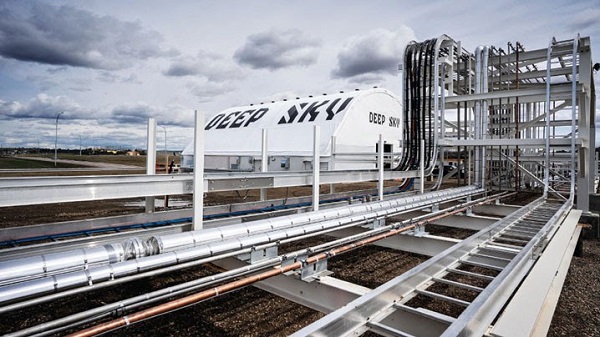Frontier Centre for Public Policy
A letter to five Canadian Churches
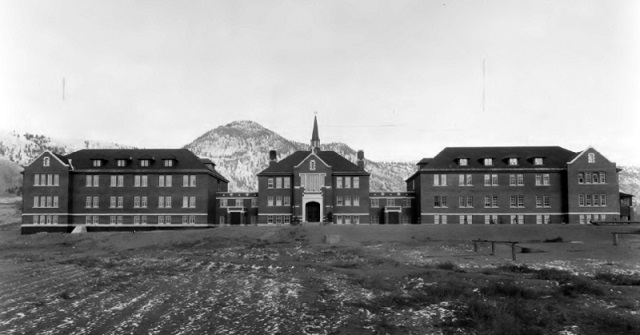
From the Frontier Centre for Public Policy
Two years ago, Eric Metaxas, the conservative Christian American author wrote a short, but important, book addressing the American Church. He was concerned the churches were forsaking their Christian principles in not speaking out against the anti-Christian ideologies and practices occurring throughout the U.S.
My letter is limited to admonishing the Canadian churches involved with Canada’s Indian Residential Schools. These churches have not spoken out in support of the missionaries they commissioned to work in these schools, people who poured their lives into their work, and who have been wrongly accused of abusing and murdering residential school children.
Obviously, those employees who are guilty should be condemned and punished, but those who are innocent should not be falsely accused of perpetrating horrific crimes.
Between 1883 and 1996, there were 143 Indian Residential Schools included in the Indian Residential Schools Settlement Agreement, a complex agreement between various Indigenous groups, the federal government, and the churches that managed residential schools.
The Roman Catholic Church managed 62 (43.4%) of the schools, the Church of England (Anglican) managed 35 (24.5%), the United Church (including the denominations that joined together in 1925) managed 19 (13.3%), the Mennonite Church managed 3 (2.1%), and the Baptist Church managed 1 (0.6%) residential school. The federal and territorial governments managed the remaining 23 (16.1%) schools.
There are four historical points to be reviewed.
First, in May 2021, Rosanne Casimer, Chief of the Kamloops Band, announced that ground penetrating radar (GPR) had found 215 unmarked graves of children in the residential schoolyard.
Surprisingly, this was the first public report suggesting that children buried in residential schoolyards had been murdered. There is, however, no credible evidence of murdered residential school children in the 3,500-page Truth and Reconciliation Commission (TRC) Report which was published 6 years earlier.
Second, despite being absent from the TRC’s “Calls to Action,” the federal government has awarded almost $8 million to the Kamloops band to excavate part of the schoolyard, and set aside over $300 million for other bands to search for soil anomalies or presumed graves.
Third, as expected with such strong incentives, many other bands have claimed that they too have graves of missing and presumed murdered children buried in the schoolyards on their reserves.
Finally, in an impressive gesture of support, Prime Minister Justin Trudeau knelt beside a grave in a well-known cemetery with a teddy bear in his hand decrying the genocide perpetrated by the churches. Later, he had the Canadian flags at government buildings around the world flown at half-mast for 6 months so that both Canadians and citizens of the world would mourn this Canadian tragedy.
Since the spring of 2021, almost 100 Christian churches have been vandalized, desecrated, or set on fire, supposedly because of the “genocide” that had taken place at the sites of Indian Residential Schools. Sadly, some of these churches, the Lutheran and Orthodox churches, for example, did not manage any of the schools.
No doubt, most Canadians are thankful there is no forensic evidence that children have been murdered and buried in schoolyards. Of course, there are children’s bodies in parish cemeteries that are often close to the schools, but most of them died of communicable diseases like influenza and TB, and they have been given proper funerals.
My concern is that over the last three years, the five churches that managed Indian Residential Schools have said little or nothing to defend themselves or the staff they commissioned to work in the schools.
In a time of need, both Indigenous and non-Indigenous Christians stepped forward to care for children living in residential schools. But the churches have not stepped forward to defend their staff in their time of need. These people are getting old, and they need support now. Instead, the churches have abandoned, or worse, condemned their faithful employees for abusing children.
Equally surprising, no church leader has supported the fundamental principle of Canadian law: individuals (and churches) are considered innocent until they are proven guilty.
It grieves me, and the few other living residential school employees, that our churches have not publically supported their innocent employees. Surely, they have a moral obligation to ensure that truth and justice prevail.
Eric Metaxas has tried to awaken American churches by pointing out where they have gone wrong. Should we not try to awaken Canadian churches to defend their involvement in Indian residential schools?
Is it too much to suggest that the church leaders think back to lessons learned from Martin Luther King Jr. and Dietrich Bonhoeffer who stood up for Christian principles against the evil practice of dehumanizing people—Blacks in the U.S. and Jews in Europe?
Not only will these churches be judged by the moral and ethical lessons they preach, but, more importantly, by the principles they live by. Canadians will see the true values of church leaders in their actions, especially concerning those they commissioned to work in their schools.
Rodney A. Clifton lived for 4 months in Old Sun, the Anglican residential school on the Siksika (Blackfoot) First Nation during the summer of 1966, and he was the Senior Boys’ Supervisor in Stringer Hall, the Anglican residential hostel in Inuvik during the 1966-67 school year. He is a Professor Emeritus at the University of Manitoba and a senior fellow at the Frontier Centre for Public Policy. His most recent book, with Mark DeWolf, is From Truth Comes Reconciliation: An Assessment of the Truth and Reconciliation Commission Report. The book will be out on November 5, and it can be preordered from the publisher.
Rodney A. Clifton is a professor emeritus at the University of Manitoba and a Senior Fellow at the Frontier Centre for Public Policy. He lived for four months in Old Sun, the Anglican Residential School on the Blackfoot (Siksika) First Nation, and was the Senior Boys’ Supervisor in Stringer Hall, the Anglican residence in Inuvik. Rodney Clifton and Mark DeWolf are the editors of From Truth Comes Reconciliation: An Assessment of the Truth and Reconciliation Commission Report (Frontier Centre for Public Policy, 2021). A second and expanded edition of this book will be published in early 2024.
Business
BC Ferries And Beijing: A Case Study In Policy Blindness
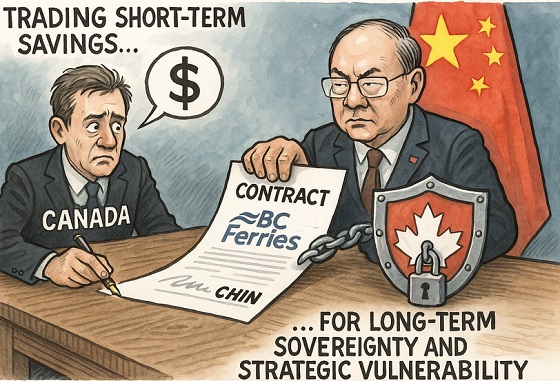
From the Frontier Centre for Public Policy
Scott McGregor warns BC Ferries’ contract with a Chinese state-owned shipbuilder reveals Canada’s failure to align procurement with national security. It is trading short-term savings for long-term sovereignty and strategic vulnerability.
BC Ferries’ recent decision to award the construction of four new vessels to China Merchants Industry (Weihai), a state-owned shipyard under the Chinese Communist Party (CCP), is a cautionary tale of strategic policy failure. While framed as a cost-effective solution to replace aging vessels, the agreement reveals a more critical issue: Canada’s persistent failure to align vital infrastructure procurement with national security and economic resilience.
The situation goes beyond transportation. It is a governance failure at the intersection of trade, security, and sovereignty.
Outsourcing Sovereignty
China Merchants Industry is part of a sprawling state-owned conglomerate, closely connected to the CCP. It is not merely a commercial player; it is a geopolitical actor. In China, these organizations thrive on a unique blend of state subsidies, long-term strategic direction, and complex corporate structures that often operate in the shadows. This combination grants them a significant competitive edge, allowing them to navigate the business landscape with an advantage that many try to replicate but few can match.
The same firms supplying ferries to BC are also building warships for the People’s Liberation Army Navy. That alone should give pause.
Yet BC Ferries, under provincial oversight, proceeded without meaningful scrutiny of these risks. No Canadian shipyards submitted bids due to capacity constraints and a lack of strategic investment. But choosing a Chinese state-owned enterprise by default is not a neutral act. It is the consequence of neglecting industrial policy.
Hybrid Risk, Not Just Hybrid Propulsion
China’s dominance in shipbuilding, now over 60% of global orders, has not occurred by chance. It is the result of state-driven market distortion, designed to entrench foreign dependence on Chinese industrial capacity.
Once that dependency forms, Beijing holds leverage. It can slow parts shipments, withhold technical updates, or retaliate economically in response to diplomatic friction. This is not speculative; it has already happened in sectors such as canola, critical minerals, and telecommunications.
Ordering a ferry, on its face, might seem apolitical. But if the shipbuilder is state-owned, its obligations to the CCP outweigh any commercial contract. That is the nature of hybrid threats to security: they appear benign until they are not.
Hybrid warfare combines conventional military force with non-military tactics (such as cyber attacks, disinformation, economic coercion, and the use of state-owned enterprises) to undermine a target country’s stability, influence decisions, or gain strategic control without resorting to open conflict. It exploits legal grey zones and democratic weaknesses, making threats appear benign until they’ve done lasting damage.
A Policy Void, Not Just a Procurement Gap
Ottawa designed its National Shipbuilding Strategy to rebuild Canadian capability, but it has failed to scale quickly enough. The provinces, including British Columbia, have been left to procure vessels without the tools or frameworks to evaluate foreign strategic risk. Provincial procurement rules treat a state-owned bidder the same as a private one. That is no longer defensible.
Canada must close this gap through deliberate, security-informed policy. Three steps are essential for the task:
Ottawa should mandate National Security reviews for critical infrastructure contracts. Any procurement involving foreign state-owned enterprises must trigger a formal security and economic resilience assessment. This should apply at the federal and provincial levels.
Secondly, when necessary, Canada should enhance its domestic industrial capabilities through strategic investments. Canada cannot claim to be powerless when there are no local bids available. Federal and provincial governments could collaborate to invest in scalable civilian shipbuilding, in addition to military contracts. Otherwise, we risk becoming repeatedly dependent on external sources.
Canada should enhance Crown oversight by implementing intelligence-led risk frameworks. This means that agencies, such as BC Ferries, must develop procurement protocols that are informed by threat intelligence rather than just cost analysis. It also involves incorporating security and foreign interference risk indicators into their Requests for Proposals (RFPs).
The Cost of Strategic Amnesia
The central point here is not only about China; it is primarily about Canada. The country needs more strategic foresight. If we cannot align our economic decisions with our fundamental security posture, we will likely continue to cede control of our critical systems, whether in transportation, healthcare, mining, or telecommunications, to adversarial regimes. That is a textbook vulnerability in the era of hybrid warfare.
BC Ferries may have saved money today. But without urgent policy reform, the long-term cost will be paid in diminished sovereignty, reduced resilience, and an emboldened adversary with one more lever inside our critical infrastructure.
Scott McGregor is a senior security advisor to the Council on Countering Hybrid Warfare and Managing Partner at Close Hold Intelligence Consulting Ltd.
Bjorn Lomborg
The Physics Behind The Spanish Blackout
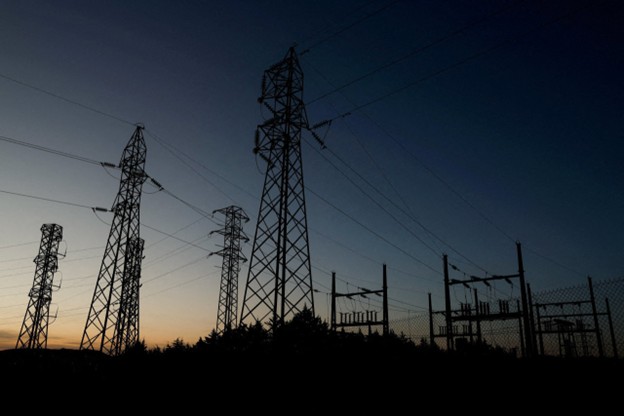
From the Frontier Centre for Public Policy
Madrid knew solar and wind power were unreliable but pressed ahead anyway
When a grid failure plunged 55 million people in Spain and Portugal into darkness at the end of April, it should have been a wake-up call on green energy. Climate activists promised that solar and wind power were the future of cheap, dependable electricity. The massive half-day blackout shows otherwise. The nature of solar and wind generation makes grids that rely on them more prone to collapse—an issue that’s particularly expensive to ameliorate.
As I wrote in these pages in January, the data have long shown that environmentalists’ vision of cheap, reliable solar and wind energy was a mirage. The International Energy Agency’s latest cost data continue to underscore this: Consumers and businesses in countries with almost no solar and wind on average paid 11 U.S. cents for a kilowatt hour of electricity in 2023, but costs rise by more than 4 cents for every 10% increase in the portion of a nation’s power generation that’s covered by solar and wind. Green countries such as Germany pay 34 cents, more than 2.5 times the average U.S. rate and nearly four times China’s.
Prices are high in no small part because solar and wind require a duplicate backup energy system, often fossil-fuel driven, for when the sun doesn’t shine or the wind doesn’t blow. The Iberian blackout shows that the reliability issues and costs of solar and wind are worse than even this sort of data indicates.
Grids need to stay on a very stable frequency—generally 50 Hertz in Europe—or else you get blackouts. Fossil-fuel, hydro and nuclear generation all solve this problem naturally because they generate energy by powering massive spinning turbines. The inertia of these heavy rotating masses resists changes in speed and hence frequency, so that when sudden demand swings would otherwise drop or hike grid frequency, the turbines work as immense buffers. But wind and solar don’t power such heavy turbines to generate energy. It’s possible to make up for this with cutting-edge technology such as advanced inverters or synthetic inertia. But many solar and wind farms haven’t undergone these expensive upgrades. If a grid dominated by those two power sources gets off frequency, a blackout is more likely than in a system that relies on other energy sources.
Spain has been forcing its grid to rely more on unstable renewables. The country has pursued an aggressive green policy, including a commitment it adopted in 2021 to achieve “net zero” emissions by 2050. The share of solar and wind as a source of Spain’s electricity production went from less than 23% in 2015 to more than 43% last year. The government wants its total share of renewables to hit 81% in the next five years—even as it’s phasing out nuclear generation.
Just a week prior to the blackout, Spain bragged that for the first time, renewables delivered 100% of its electricity, though only for a period of minutes around 11:15 a.m. When it collapsed, the Iberian grid was powered by 74% renewable energy, with 55% coming from solar. It went down under the bright noon sun. When the Iberian grid frequency started faltering on April 28, the grid’s high proportion of solar and wind generation couldn’t stabilize it. This isn’t speculation; it’s physics. As the electricity supply across Spain collapsed, Portugal was pulled along, because the two countries are tightly interconnected through the Iberian electricity network.
Madrid had been warned. The parent company of Spain’s grid operator admitted in February: “The high penetration of renewable generation without the necessary technical capabilities in place to keep them operating properly in the event of a disturbance . . . can cause power generation outages, which could be severe.”
Yet the Spanish government is still in denial. Even while admitting that he didn’t know the April blackout’s cause, Prime Minister Pedro Sánchez insisted that there was “no empirical evidence” that renewables were to blame and that Spain is “not going to deviate a single millimeter” from its green energy ambitions.
Unless the country—and its neighbors—are comfortable with an increased risk of blackouts, this will require expensive upgrades. A new Reuters report written with an eye to the Iberian blackout finds that for Europe as a whole this would cost trillions of dollars in infrastructure updates. It’s possible that European politicians can talk voters into eating that cost. It’ll be impossible for India or nations in Africa to follow suit.
That may be unwelcome news to Mr. Sánchez, but even a prime minister can’t overcome physics. Spain’s commitment to solar and wind is forcing the country onto an unreliable, costly, more black-out-prone system. A common-sense approach would hold off on a sprint for carbon reductions and instead put money toward research into actually reliable, affordable green energy.
Unfortunately for Spain and those countries unlucky enough to be nearby, the Spanish energy system—as one Spanish politician put it—“is being managed with an enormous ideological bias.”
Bjorn Lomborg is president of the Copenhagen Consensus, a visiting fellow at Stanford University’s Hoover Institution and author of “Best Things First.”
-

 Alberta17 hours ago
Alberta17 hours agoAlberta Independence Seekers Take First Step: Citizen Initiative Application Approved, Notice of Initiative Petition Issued
-
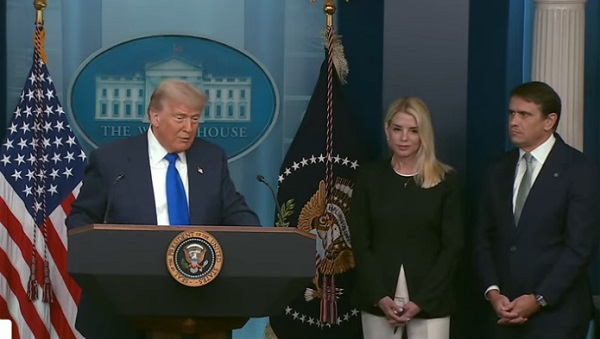
 Business2 days ago
Business2 days agoTrump on Canada tariff deadline: ‘We can do whatever we want’
-

 Automotive2 days ago
Automotive2 days agoPower Struggle: Electric vehicles and reality
-

 Automotive2 days ago
Automotive2 days agoElectric vehicle sales are falling hard in BC, and it is time to recognize reality.
-
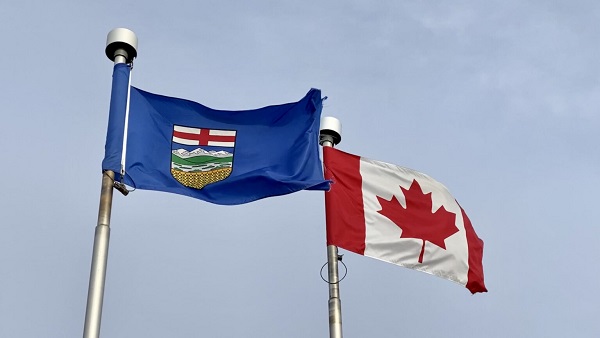
 Alberta16 hours ago
Alberta16 hours agoWhy the West’s separatists could be just as big a threat as Quebec’s
-

 Business19 hours ago
Business19 hours agoCanada Caves: Carney ditches digital services tax after criticism from Trump
-
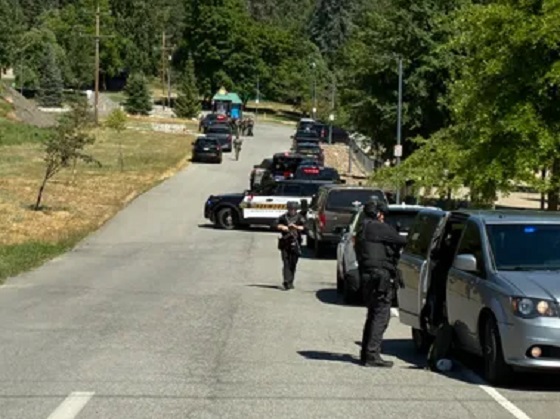
 Crime19 hours ago
Crime19 hours agoSuspected ambush leaves two firefighters dead in Idaho
-
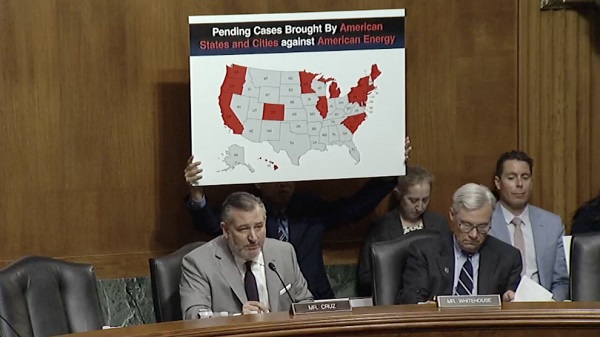
 Energy2 days ago
Energy2 days agoChina undermining American energy independence, report says
